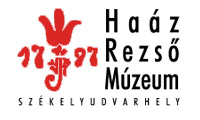Kovács Petronella (szerk.): Isis - Erdélyi magyar restaurátor füzetek 10. (Székelyudvarhely, 2010)
B. Perjés Judit - Domokos Levente - Puskás Katalin: Tíz nap a "Nagy-Küküllő felső folyása mentén" avagy hazi és vendég restaurátorok a székelykeresztúri Molnár István Múzeum születő állandó kiállításán
analyses were justified by the differences in the painting and the conditions of the leaves between the first and the second halves of the body of the book. In the second half of the volume, the tone of the painting changes, the leaves are covered with a whitish incrustation and deteriorations resembling ink corrosion can be observed in the painted illustrations. The colour of the green areas is vivid, yellowish green in the first half of the book, while in the second half, it was applied in a thinner layer, it faded and had a slight brownish tint. In the second half of the book, brownish discolouration appeared on the leaves, the painted surfaces faded, a brownish penetration of the paint layers, a few smaller missing areas and fissures were observed. The objective of the analyses was, accordingly, the determination of the deteriorations and the causes of the differences observed in the condition of the volume. The pigments and the binders used in the volume were determined with phototechnical methods and microanalysis, dust-slides for microscopic analyses, electron dispersive spectroscopy (EDS) Raman spectroscopy and Fourier transform infrared spectroscopy (FTIR). The author gives full details of the analytical process of the green and red pigment layers and the smoke depictions, which appeared in a grey colour in the first half of the volume and in a brown colour in the second half. With the analyses, the author was looking for the reason of the change of the tone of the green pigment layer, the crumbling of the red pigment layer and the deterioration of the paper areas coloured in brown and beige. Another question was if the differences of the conditions and the tones of the two parts of the volume came from the composition of the paint or some kind of a transformation, deterioration. It could be determined from the analyses that in the first half of the volume the painter used verdigris, minium, lead white and coal black pigments in the green, red and grey layers, which he applied on the surface with acacia gum binder. In the second half of the volume, the painter changed the composition of the pigments. The abovementioned pigments were mixed with vegetal colours precipitated on starch and probably added alum to the paint. The presence of alum could only be demonstrated from the results of element analytical analyses and the acidity in knowledge of the contemporary paint recipes (since it was present in a very low amount). The binder was most probably acacia gum in the second half of the volume as well. The different composition appears in the tone, the colour and the physical and chemical properties of the painted layers. The deteriorations of the paper and the transformations of the painted layers observed in the second half of the book can most probably be attributed to the change of the manufacturing technology. The alum added to pigments containing iron and copper ions probably caused acidity, which deteriorated both the paper and the paint layers. The presence of metal ions influenced the process. The crumbling of the red paint layers was caused by the insufficiency of the acacia gum binder and/ or the deterioration of the binder (acidic decomposition). The example illustrates that the examination of painted paper objects is a very complex process, in which various analytical methods must be used together and the knowledge of contemporary descriptions, recipes and the data published in the technical literature is indispensable. In many respects, the materials that compose the paint layers and the reasons of the deteriorations can only indirectly be deduced. Katalin Orosz DFA Paper and leather conservator MA Hungarian National Museum Department of Conservation Training and Research Phone: +36-1-210-1330/173 E-mail: oroszkata.rest@gmail.com Eva Benedek Conservation of an 18th century copy of the Weeping Mary picture of Kolozsvár A Mother of God icon prepared in 1681 belonged to the furnishing of the wooden church of Fiizesmikola (Nicula) close to Szamosújvár (Gherla) (Kolozs (Cluj) county). It was painted by Fukács of Iklód, who according to certain sources was a Ruthenian, according to other sources a Russian painter, and a local Romanian nobleman called Kupsa (Copsa, Cupsea ?) gave it to the church. According to the local tradition, it got spread in 1699 that the above-mentioned Mother of God icon started to weep; the phenomenon was considered a miracle and the picture was revered accordingly. Regarding its type, it is a Hodigitria Mary depiction. The name came from the monastery of Ton Hodegon the original place of preservation of the icon attributed to Holy Fuke, which was destroyed by the Turks at the siege of Constantinople in 1453. Pictures of this type depict Mary either standing or sitting on a throne, the infant Jesus conferring blesses with the right hand and holding a scroll, the symbol of the Word of God, the Logos, in the left. The name also implies that Mary indicates the right way. Numerous copies were made of the picture on various supports. The engraving, the topic of this study is one of them, which was printed on a hand-made paper. The inscription Mansfeld Sculpsit Viennae, the signature of the copperplate engraver can be read in the right lower comer. The inscription on top of the paper runs ”NOS CUM PROLE PIA BENEDICAT VIRGO MARIA” (it cannot be seen since it was covered by the crown coated overlaid by blue silk at the dressing of the Virgin), while we can read the followings at the bottom of the frame: „VERA EFFIGIES B. VIRG. MARIAE, FLENTIS IN TRANSILV. AD CLAUDIOPOLIM AO 1699.DIE 15. FEBR. visitur in Templo Academico. Claudiopoli,,. During the historical investigations we could determine certain similarities and identities with other copies of the Weeping Mary. 190
